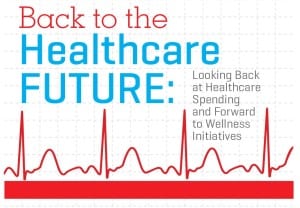Don’t let the name fool you. A cafeteria plan has nothing to do with sloppy joes and shepherd’s pie. It is a benefits plan that can be used to set aside money on a pre-tax basis for certain expenditures. These expenses are limited to insurance premiums, healthcare, dependent care, and adoption fees.
What Are the Benefits of Cafeteria Plans?
The IRS allows employers to set up these plans for their employees as a means of setting aside money for specific life events on a pre-tax basis. This means that the employee will not be taxed on the money that is placed in the plan. Likewise, contributing to a plan such as this guarantees that the employee will have enough money saved to pay for certain life expenses.
What Expenses Are Covered?
The most common plan is the Premium Only Plan, or POP. This plan is used to pay for health and life insurance premiums, usually those that are offered through the employer. Employees can also set up flexible spending accounts, or FSAs, to pay for unreimbursed medical or adoption expenses. The maximum amount allowed for contributions to these expenses are set up by employers rather than the IRS, though many do not have a limit to the amount that can be deducted. Lastly, flexible accounts for dependent care can be used to set aside up to $5,000 per year for child or elder care.
Is There a Downside to These Plans?
The money contributed to this plan must be used within the plan’s year. Any money left unused by year’s end is forfeited. For this reason, it is wise to be conservative when estimating the amount of money needed for medical expenses. Likewise, it is very difficult to change the withholding during the year. Unless certain life events are present, such as divorce or death in the family, most employees must wait until the end of the year to address a decrease or increase in the contribution.
Who Can Partcipate
In order to use a pre-tax benefit plan, it must be offered by the employer. Employers are not required to sponsor plans these plans. Self-employed people are not eligible to participate, nor are non-employee directors. Sole proprietors of businesses cannot be a part of a plan, but they can sponsor them for their employees. If a person would like to be involved in a plan, but it is not offered by their employer, the topic should be addressed. Employers must spend some time on the plan, but it can prove to be a tax savings to them as well as the employee.
Pre-tax benefits are some of the best for both employer and employee. They can keep money available for times when it is needed the most while also working as a much-needed tax shelter. They are vital for those with dependents or long-term health problems, but are also a nice savings for those medical events that happen without warning. A cafeteria plan is an excellent, no-fuss savings for expenses that are faced by everyone during the year.
Related Infographic:
